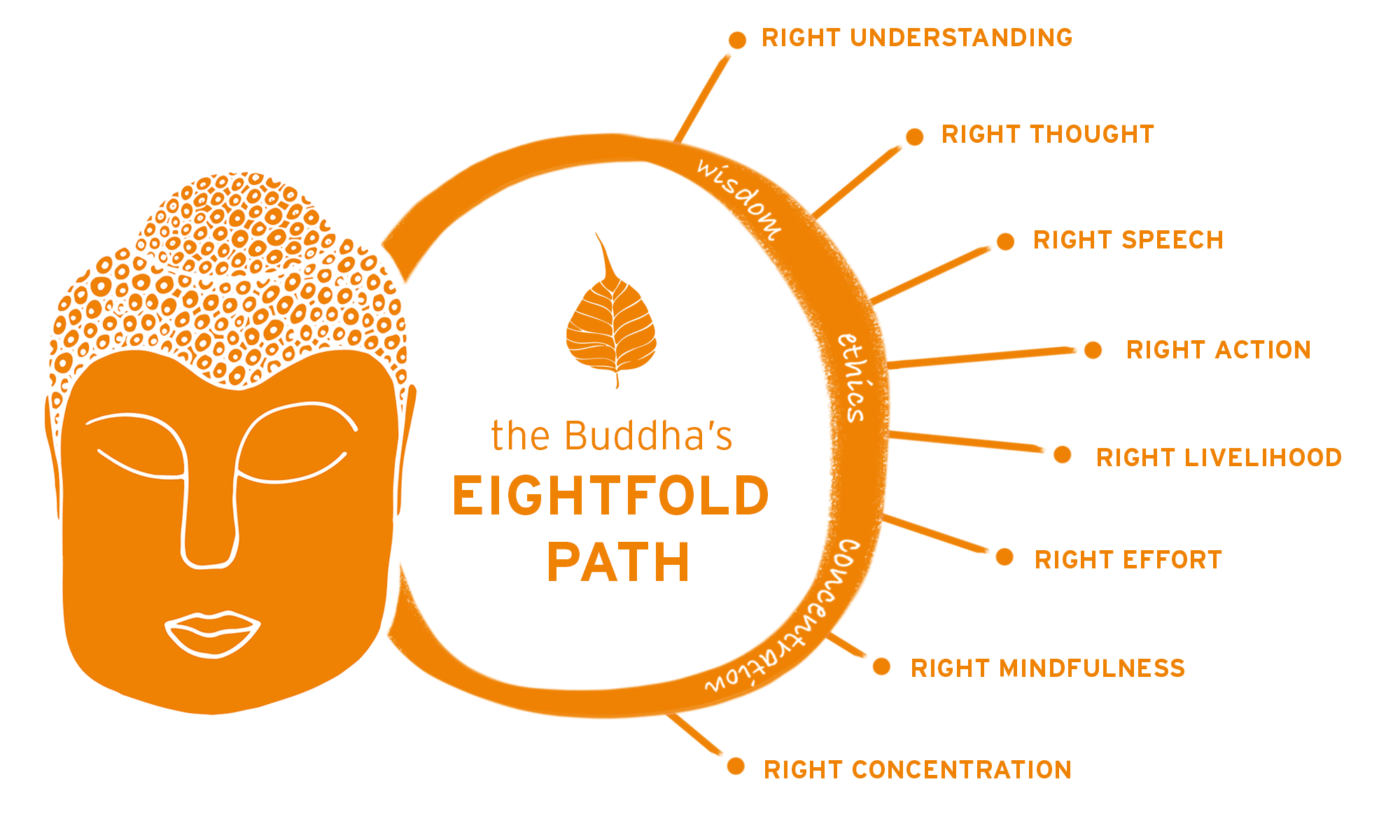In Buddhism, The Eightfold Path is meant as a guideline, to be considered, to be contemplated, and to be taken on when, and only when each step is fully accepted as part of the life you seek. Buddhism never asks for blind faith, it seeks to promote learning and a process of self-discovery.
There is great wisdom in this path, all of which can be tried out and tested in everyday life. In following and practicing the path, you learn to see life realistically, without delusions crowding out your mind and creating a lot of mental noise and anguish, and you’ll benefit in many other ways.
The path is not linear. In fact, many of the areas of the path can’t really be explored without practicing other areas. For instance, Right Mindfulness and Right Intention go into all parts of the path. I would say all areas of the path are of equal importance. Over time you’ll settle into exploring them naturally.
1.Understanding
The first step of the eightfold path is Right Understanding.
By right understanding, Buddha means seeing things in the right perspective. Seeing things as they really are, without any false illusions or pretences. What are your views of the world? Do you cling to your views? Understanding the Three Marks of Existence and the Four Noble Truths will help you to have the right view of yourself and the world.
2.Thought
Buddha says that we are what we are because of what we think. What goes on inside our minds (our thought process) determines our course of action. Therefore it is necessary to follow the path of Right thought or Right Intention. To have the Right Intention or the Right Thought, a person should be aware of purpose or one's role in life and is studying the teachings of Buddha.
For example, when our intentions stem from anger, fear, resentment, or greed we are more likely to do harm with our thoughts, words, and actions. A great way to practice is to ask ourselves questions about intent like:
- Why am I thinking this?
- Why caused me to say that to my spouse?
- What made me angry enough to throw the phone?
Once you are aware of your intentions it is easier to try to set new ones and to replace old intentions.
3.Speech
Right speech means communicating with others in a way that doesn’t cause harm. Buddha asks his followers to speak truth. Lying, gossiping, and hurting other people feelings is not right speech. This covers all forms of communication (speech, texting, emailing, writing, etc). This doesn’t mean withholding opinions or ideas, it means we are mindful of the intention behind the communication to decide if what we are going to say will do more good or more harm.
4.Action
Behaving peacefully and harmoniously; Right action, according to Buddha, lies in adherence to the following guidelines:
- Staying in harmony with fellow human beings
- Behaving peacefully
- Not stealing
- Not killing anyone
- Avoiding overindulgence in sensual pleasure
- Abstaining from sexual misconduct
- Not indulging in fraudulent practices, deceitfulness and robbery
5.Livelihood
By laying down this guideline, Buddha advises his followers to earn their bread and butter righteously, without resorting to illegal and nefarious activities. He does not expect his followers to exploit other human beings or animals or to trade in weapons or intoxicants.
We must determine for ourselves if what we do for a living is causing harm to ourselves and others, or if it is neutral or helping. Right livelihood also includes how we interact with others while doing our jobs.
6.Effort
Buddha believed that human nature imposes undue restrictions on the mind at times, causing a person to harbor ill thoughts. The right effort is what it will take to be able to put into practice all the other parts of the path. Without effort, there is no practice. We must be determined to put into practice all the other points of the path if we want to experience any kind of positive change. Right effort affects all of our interactions in the world.
7.Mindfulness
Right mindfulness means paying attention to everything we think, say, and do. It’s important that mindfulness should be anchored in the present. With proper intention, effort, and mindfulness, you can train yourself to be present in everything you do. Right mindfulness goes hand in hand with all the other points of the path.
For example: Right speech will determine what I’m saying to someone when I’m talking to them…Right mindfulness will prevent me from checking my phone while I’m talking to someone in person.
Meditation is the tool to develop mindfulness. As you develop mindfulness in the quiet, still environment of meditation, you then extend mindfulness to include all your daily life.
8.Concentration
Right concentration is the practice of focusing the mind solely on one thing. Like mindfulness, concentration is a tool to anchor us in the present. Concentration improves through meditation and it requires the use of right effort, right intention, and right mindfulness. Once mindfulness and concentration are established, then you can develop greater insight overall because your mind is no longer cluttered with thoughts that inhibit wisdom.

The Eightfold Path by Buddha





